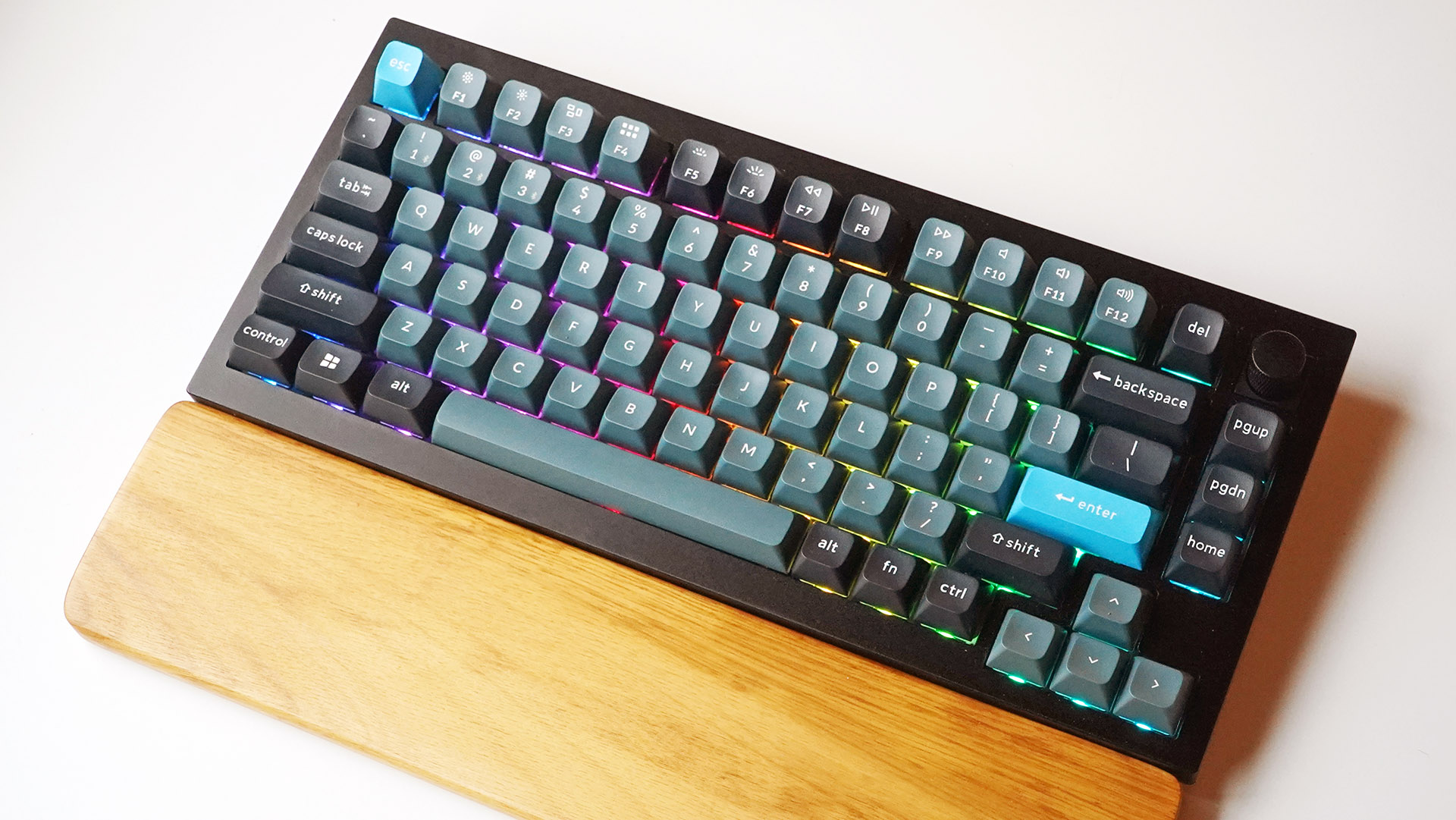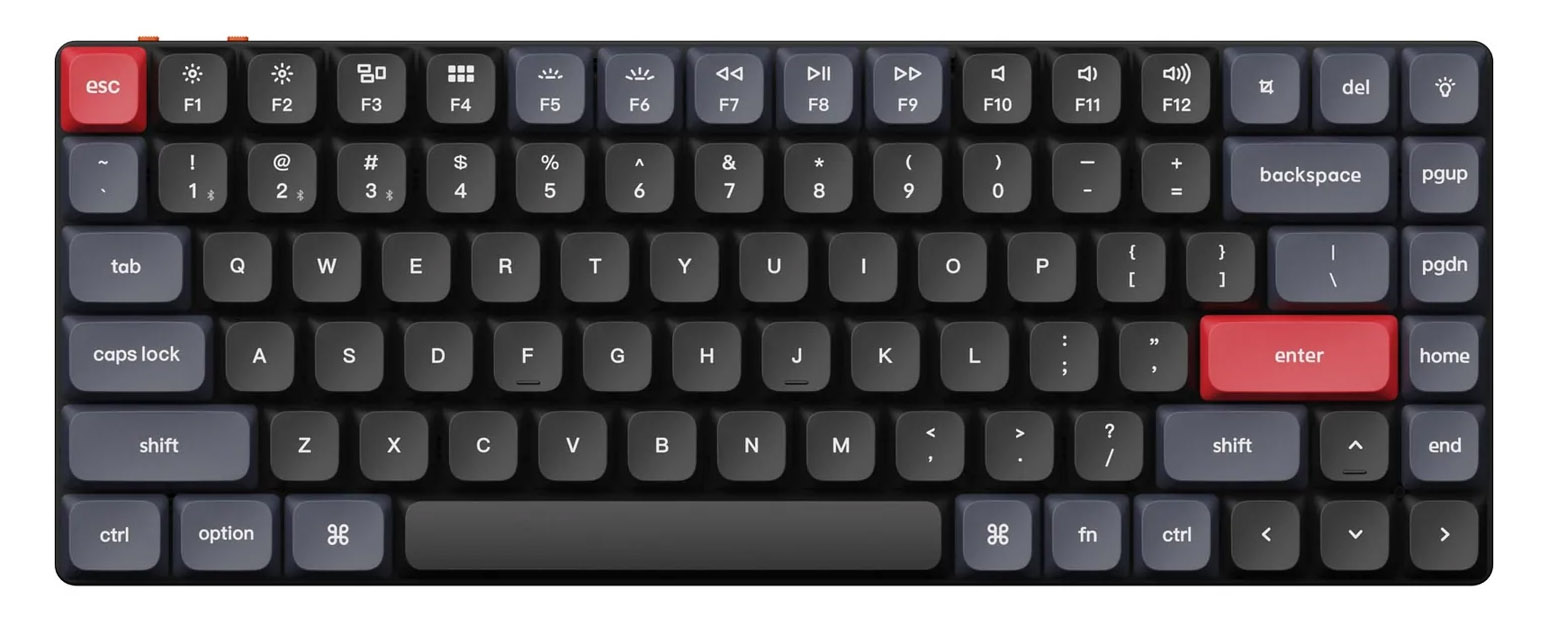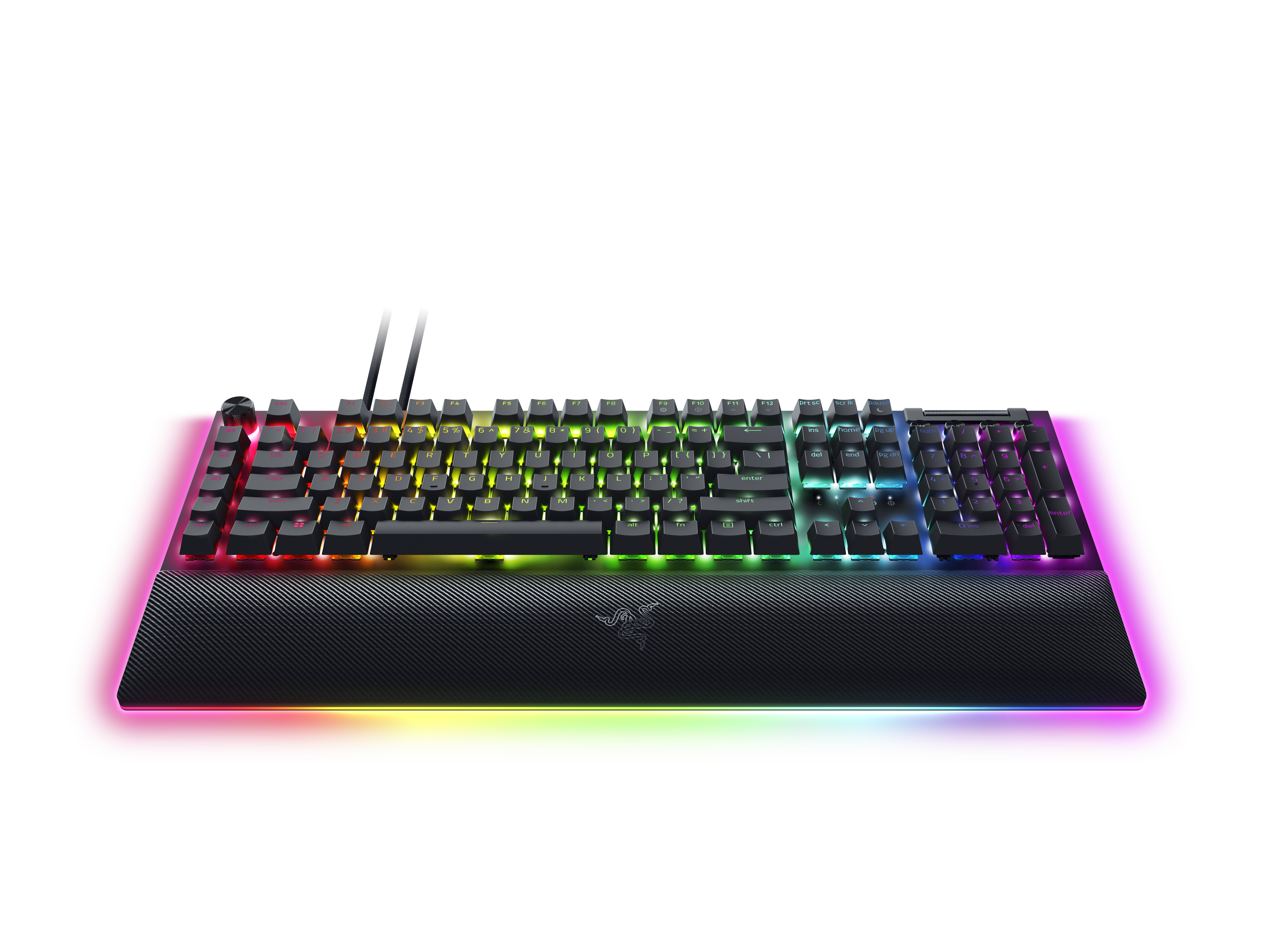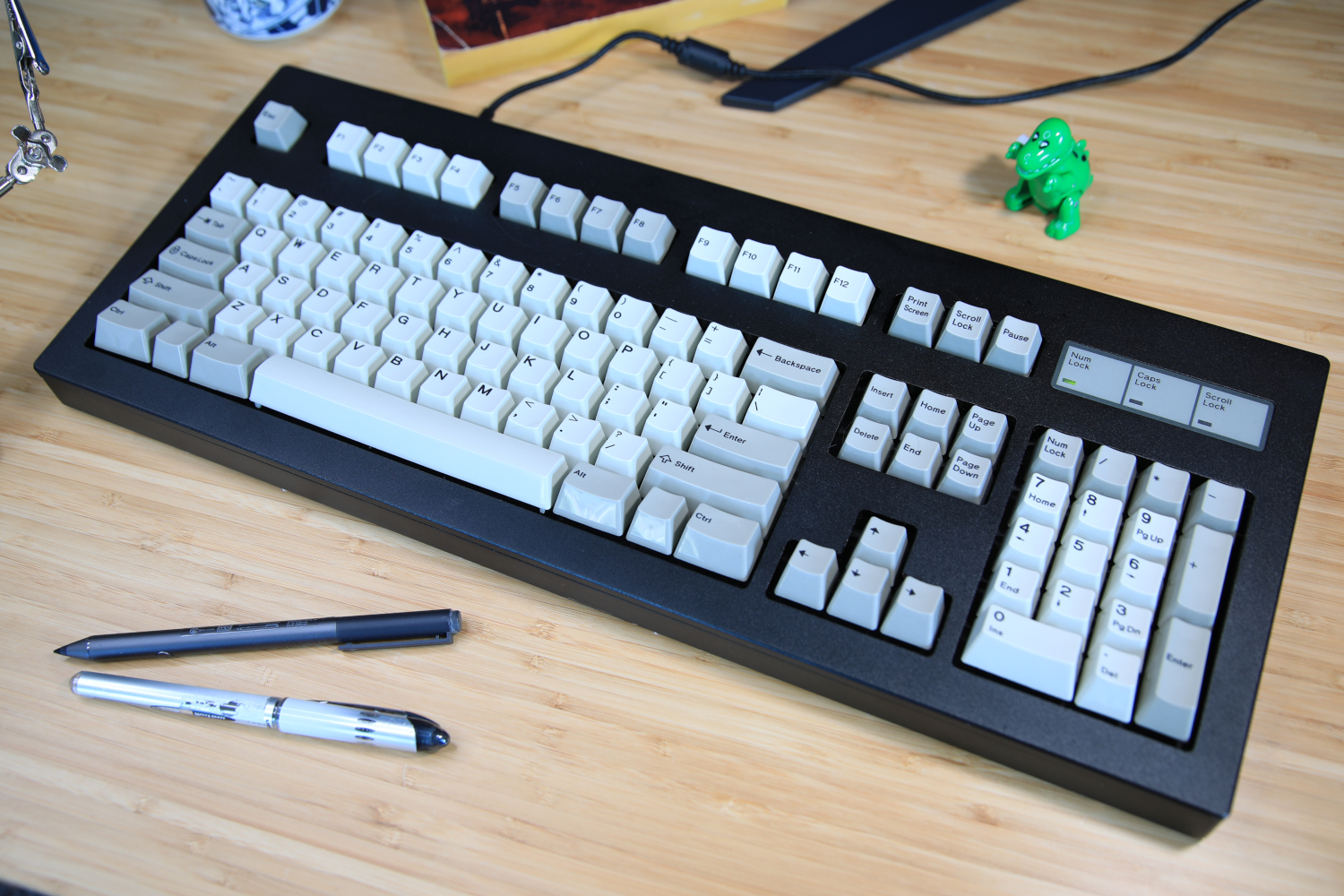Mechanical keyboards have been around almost as long as personal computers, and the basic switch technology we’re still using first popped up in the 1980s. But it’s not an exaggeration to say that mechanical boards have never been as popular, or as stunningly variable, as they are right now. If you’re just getting into the craze, you might feel paralyzed by the number of options available.
Allow us to remove some of the questioning and doubt. Below are the best mechanical keyboards we’ve reviewed, in a variety of categories—best overall, on a budget, for gaming, wireless, et cetera. Though they excel in different areas, each mechanical keyboard pick is absolutely the best in its class, and well worth both your attention and your hard-earned dough.
Further reading: See our roundup of the best gaming keyboards for even more options.
Keychron Q Series – Best mechanical keyboard overall

Pros
- Great hardware
- Excellent wireless performance
- Unbeatable value
Price When Reviewed:
$199
We’ve singled out the Q1 Pro for its wireless prowess, but really, it’s hard to go wrong with any of the Q series. Fantastic build quality, near-endless customization, and a surprisingly fair price (at least compared to keyboards with similar features) make it the brand to beat if you want a high-end mechanical board. Q boards come in a variety of sizes and layouts, from tiny 40% all the way to a massive 108-key layout. And all of them include awesome aluminum frames, RGB lighting, hot-swap switches, internal sound damping, and easy programming with QMK or VIA.
Read our full
Keychron Q1 Pro Keyboard review
Keydous NJ80-AP – Best typing experience, best wireless

Pros
- Amazing typing experience
- High-quality parts
- Bluetooth and 2.4GHz wireless
- Long battery life
Cons
- Clunky software
- Plastic case
- A bit heavy
Price When Reviewed:
$150
This unassuming little board is packing a shocking amount of high-quality hardware, like exotic BOX switches, PBT keycaps, a brass switch plate, tons of internal foam, and hot-swap switch sockets. It’s easily the best typing experience out of the box of any keyboard on this list, but you can customize it even further if you want, and it also comes with both Bluetooth and 2.4GHz support, which makes this our pick for the best wireless mechanical board. The plastic case and odd non-standard programming software aren’t great, but it’s also significantly cheaper than similarly equipped boards, so the bargain helps even things out.
Read our full
Keydous NJ80-AP wireless mechanical keyboard review
Keychron K3 Pro – Best low-profile mechanical keyboard

Pros
- Great size and layout
- High-end features
- Unbeatable price
Cons
- VIA programming is a little tricky
Price When Reviewed:
$114
Keychron’s K Pro series has most of the features of the Q Pro keyboards, but with a fraction of the size and weight. The K3 Pro is an ideal combination of compact layout and comfort, requiring no extra programming or muscle memory for most users. Despite fewer options for switches and keycaps at this size, the K6 Pro also offers at least some customization choices: Its RGB lighting and programming can be tweaked in VIA software, and its switches are hot-swappable. The same features are available in 65%, tenkeyless, and full-sized layouts, but we like this one for its excellent travel capabilities.
Read our full
Keychron K3 Pro review
Razer BlackWidow V4 – Best mechanical keyboard for gaming

Pros
- Super-quick key actuation thanks to 8,000Hz hyperpolling
- Eight dedicated macro keys put more options at your fingertips
- The RGB is superb, with both per-key RGB illumination and an immersive RGB underglow throughout
Cons
- The Green switch model’s keys don’t bounce enough for long typing sessions
- You’ll need a lot of desk space to place it down
- It’s quite heavy, so not ideal for carrying to LAN parties
Price When Reviewed:
229.99
Gamers who want bombastic excess in their keyboards need look no further than Razer. The latest version of the BlackWidow ditches wireless to double down on super-fast, 8,000Hz polling (which means the keyboard is faster than your puny human reflexes) and enough RGB lighting to double as emergency illumination for the average jumbo jet. It’s also absolutely massive in terms of keys, with an extra eight macro keys and two, count ’em, two, programmable radial dials. Just make sure you have enough space on your desk for both the keyboard and the included light-up wrist rest.
Read our full
Razer BlackWidow V4 Pro review
G.Skill KM250 – Best mechanical keyboard under $50

Pros
- Incredible value
- PBT “pudding” caps
- Great layout
- Hot-swap switch sockets
This little board crams so many features into such a small price, it’s our pick for the best budget mechanical keyboard and the best budget gaming board. We’re talking PBT keycaps, high-quality Kailh switches in hot-swap sockets, RGB lighting, a radial dial, and internal foam for sound damping. All that for under 50 bucks is absolutely nuts in terms of value, and it’s a great place to start if you’re not sure you want to invest a lot into a fancier board. The only thing the KM250 is missing is a programming tool, but at this price, it’s more than fair as a trade-off.
Read our full
G.Skill KM250 RGB Keyboard review
Keychron Q11 – Best ergonomic mechanical keyboard

Pros
- Sturdy build
- Hot-swappable switches
- Easy keyboard programming in VIA
- Priced very competitively
Cons
- Slightly awkward keyboard layout
- No tenting kit available (not even as an optional accessory)
Price When Reviewed:
$205
Keychron’s on this list again thanks to the company’s dedication to offering as many form factors as possible. The Q11 offers the same features as the rest of the Q series (fantastic aluminum body, hot-swap sockets, PBT keycaps, VIA programming), plus a split layout that’s essential for users who need ergonomic customization. It’s also a fraction of the price of other high-end ergonomic mechanical boards, with the only real downside being that it doesn’t offer a tenting kit.
Read our full
Q11 QMK Ergonomic Mechanical Keyboard review
Model F Ultra Compact – Best old-school mechanical keyboard

Pros
- Excellent typing feel
- Classic layout is instantly familiar
- Durable die-cast metal chassis
- Easy to repair and customize
Cons
- Heavy key feel isn’t great for fast-paced games
- Lacks modern hardware and software features
- Expensive
Price When Reviewed:
$420
Arguably the most famous keyboard among mechanical enthusiasts is the IBM Model M, thanks to its unique and incredibly tactile (and noisy!) buckling spring switch mechanism. Some of these keyboards have been in continual use for more than 40 years, but if you’re looking for something a little more accessible, Model F Labs is making reproductions with exactly the same tank-like build and modern USB connections. the typing experience is like no other, just don’t be surprised if it’s a little harder than you’re used to—on both your fingers and your wallet.
Read our full
Model F Ultra Compact review
If you’re just getting into mechanical keyboards, then you’re probably most interested in how it “feels” to use one. In short, mechanical switches offer a deeper and more satisfying press on each key, which is preferred over standard inexpensive keyboards by heavy-duty typists and gamers. (Not all of them, of course, but most people seem to favor at least a certain level of clickiness.) But there are a lot of different variables that can affect how those keys feel.
Key switches
Modern mechanical keyboards come in a staggering array of switch varieties, from smooth and linear to loud and clickly, with tons of options for mechanisms and spring strength. The only real way to know which one you prefer is to try ’em out (retail store displays are great for this). That being said, more expensive keyboards tend to come with nicer, high-quality switches from name brands like Cherry and Gateron. For the ultimate in customization, track down a keyboard with hot-swap switches, which let you swap out the switches for new and different ones whenever you want.
Keycaps
Keycaps are the little pieces of plastic that sit on top of the switches—what your fingers press down on. Switching out the keycaps for a set of nicer ones, maybe made of better PBT plastic or themed after your favorite TV show, is a popular and easy keyboard mod. Some keyboard makers even sell their own upgrade sets. Keycaps with a Cherry MX-compatible stem will work with almost all modern mechanical switches, just make sure you find a set that matches the layout of your keyboard.
Layout
The layout of the keys on your keyboard varies more than you might think. Full-sized keyboards include a 10-key area to the right of the arrow cluster, but gaming models often omit this in order to make more room for mouse movements, calling this the “10-key-less” layout. Some keyboards go even smaller, with 60% being the smallest that mainstream brands use, chopping off the Function row, 10-key area, and even the arrow keys (which have to be accessed via a Fn button). A few designs go even larger than the full layout, with an extra column or two of programmable keys for custom bindings or macros. Which one you want comes down to use-case, available space, and, perhaps more pertinently, taste.
These general layouts shouldn’t be confused with country- and region-specific key layouts, like ANSI and ISO. Most popular designs are available in at least those two variants.
Wireless options
Mechanical keyboards start with a standard wired USB connection, which may or may not be detachable from the keyboard itself for easier cable routing. Wireless boards tend to default to Bluetooth these days, since pretty much all PCs and mobile devices can use it. More premium models offer both Bluetooth and the faster, more reliable USB wireless dongle, typically on a 2.4GHz connection. Gamers definitely want to stick to wired or dongle options as Bluetooth’s susceptibility to input lag and interference can hinder gaming.
Lighting
Even budget gaming keyboards come with LED backlights these days, though they might not be the fully programable, device-synced lightshow that companies like Razer and Corsair delight in. Unless you’re constantly playing in the dark and you can’t touch-type, it’s entirely cosmetic. It’s fun, that’s about it.
Keyboard makers are forever trying to one-up each other with extra features. For a mechanical board you can generally expect a removable USB cable (maybe a braided one for nicer boards), and possibly an included keycap puller and wrist rest. Larger boards usually include dedicated media controls, and the nicer ones get a fully programmable wheel or knob, as well as hot-swap switch sockets that let you experiment with different types of key switches. An especially nice option is on-device memory, allowing you to keep key layout programs without running a driver program on each new computer.
Stay connected with us on social media platform for instant update click here to join our Twitter, & Facebook
We are now on Telegram. Click here to join our channel (@TechiUpdate) and stay updated with the latest Technology headlines.
For all the latest Technology News Click Here
For the latest news and updates, follow us on Google News.
